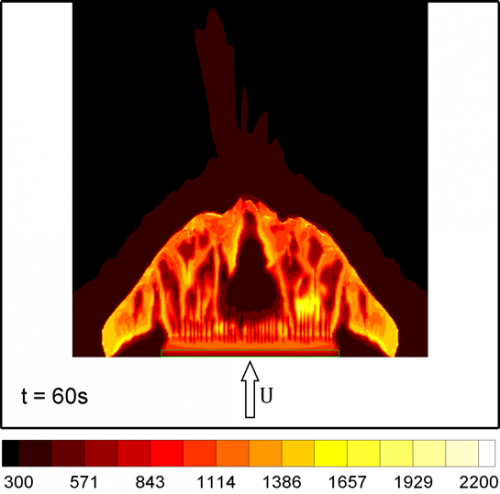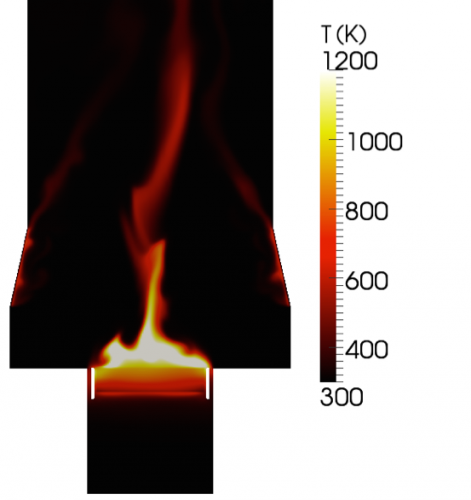This research is therefore mainly based on the development of numerical simulation tools for three-dimensional, turbulent and reactive flows. Numerical simulations (2D and 3D) will be used to assess the influence of parameters such as wind speed and direction, terrain slope and relief, and the nature of the fuel stratum (spatial structuring, composition, water content) on flame propagation regimes. In addition to the fundamental aspects of fire physics (ignition conditions, free propagation on small and large scales, fire transitions), we are also interested in reproducing specific situations of a more operational nature, such as the interaction between two fire fronts (fire and backfire), the impact of fires on the soil (biotic activity and seed bank after the passage of a fire or prescribed burn), the transition from a surface fire to a crown fire, and the effectiveness of fuel breaks set up in the vicinity of forest/habitat interfaces. Naturally, the latter activity is heavily involved in risk management at forest/housing interfaces, as well as in fire safety engineering.
The team is also involved in establishing navigation rules within the Parc National des Calanques in order to limit the impact of human activity on the park's ecosystems. This activity involves assessing all the consequences of passenger shipping in the park, through a global energy analysis specific to each craft used in the park for commercial purposes.

